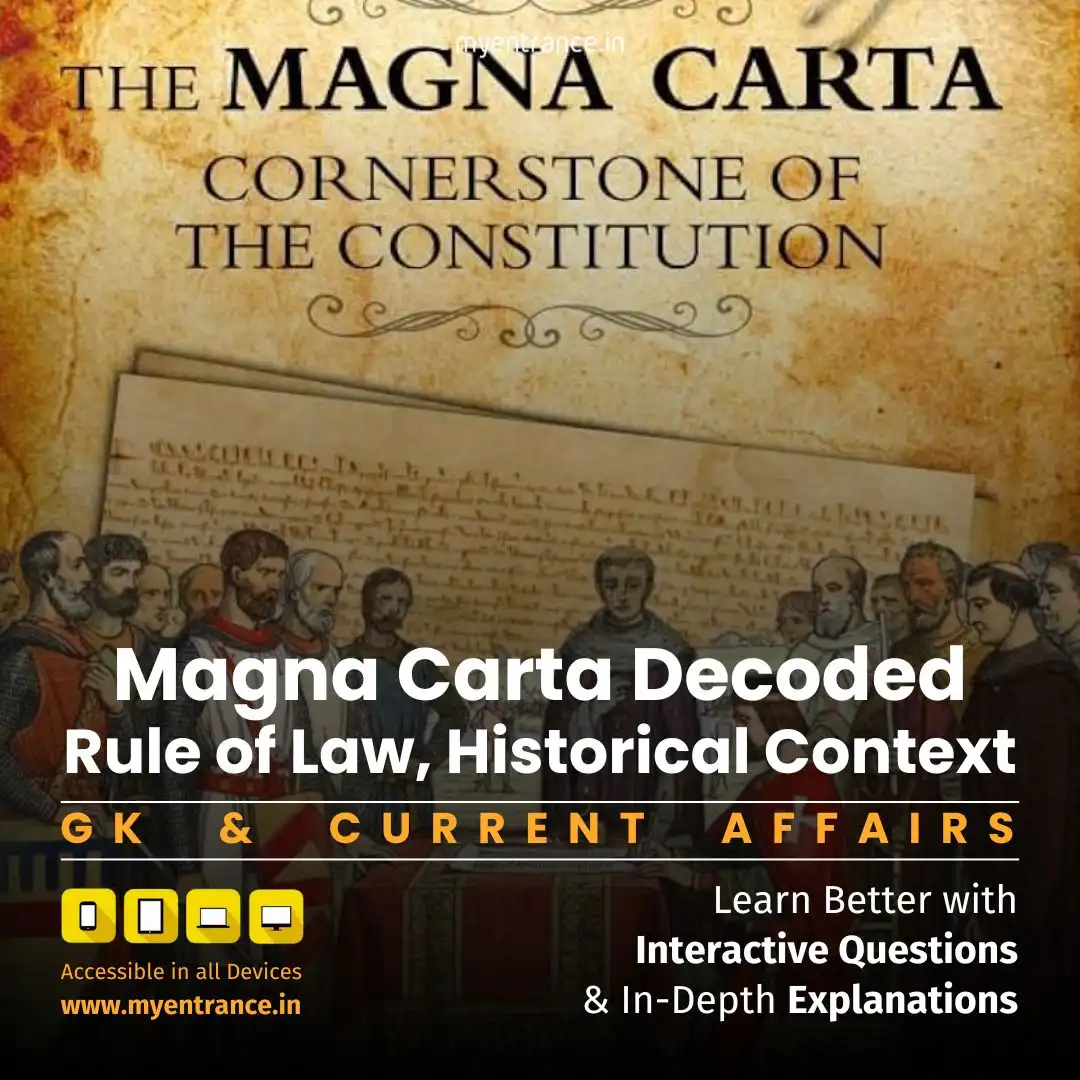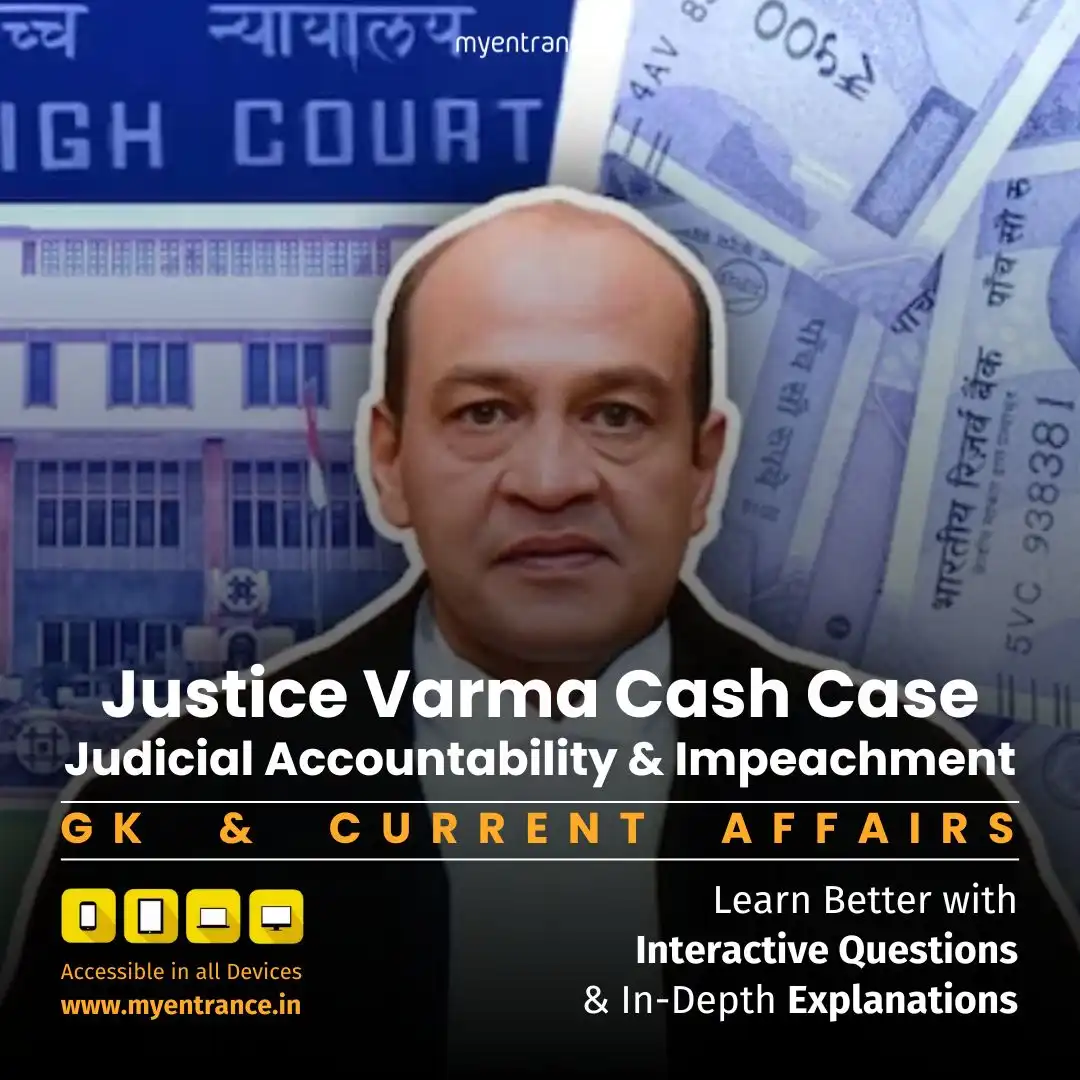Select Language
Magna Carta: How a 13th-Century Charter Shaped Modern Democracy (Exam Guide)
The Magna Carta, sealed in 1215, was a revolutionary document that challenged absolute monarchy and laid the foundation for modern constitutional governance. Today, its principles of justice, rule of law, and due process remain vital for democracies worldwide, including India.

The Historical Origins of the Magna Carta
On June 15, 1215, in the meadows of Runnymede, English barons forced King John to sign the Magna Carta (“Great Charter”). This historic event was driven by:
King John’s Tyrannical Rule: His military failures (like the Battle of Bouvines in 1214) led to heavy taxation and oppression.
Feudal Revolt: Barons rebelled against arbitrary land seizures and unjust governance.
Demand for Legal Limits: The charter established that even the king was not above the law.
This marked the beginning of constitutional governance, setting a precedent for future democracies.
Why the Magna Carta Still Matters
Though created in medieval England, its principles continue to influence modern legal systems:
Rule of Law: Established that no ruler is absolute—foundational for democracies like India and the U.S.
Due Process: Clause 39 stated, “No free man shall be imprisoned except by lawful judgment,” a precursor to modern legal protections.
Global Influence: Inspired the U.S. Bill of Rights and India’s constitutional safeguards (Article 21).
Critical Perspectives on the Magna Carta
While revolutionary, it had limitations:
Limited Rights: Only applied to “free men,” excluding serfs and women.
Elitist Origins: Designed to protect baronial privileges, not common citizens.
Medieval Context: Focused on feudal disputes rather than universal freedoms.
Key Insight: Despite its flaws, the Magna Carta introduced the concept of accountability, shaping future constitutions.
Magna Carta vs. the Indian Constitution: A Comparative Analysis
While the Magna Carta (1215) was a groundbreaking document in its time, its scope was largely limited to feudal elites, ensuring rights only for “free men” rather than the entire population. In contrast, the Indian Constitution (1950) guarantees universal rights (Articles 14-18, 21) to all citizens, regardless of social status. Another key difference lies in enforcement—the Magna Carta lacked a strong mechanism to hold rulers accountable, whereas India’s Constitution establishes an independent judiciary (Articles 32, 226) to safeguard fundamental rights. Additionally, while the Magna Carta focused primarily on procedural justice, India’s Constitution goes further by incorporating socio-economic rights through Directive Principles of State Policy (DPSP), ensuring a more equitable society. This evolution highlights how modern constitutions have expanded upon medieval principles to create more inclusive and just legal frameworks.
Sample Questions & Answers for Competitive Exams
Q1: How did the Magna Carta influence the Indian Constitution?
A: It inspired fundamental rights (especially Article 21’s “due process”) and the principle that government power must have legal limits.
Q2: Why is the Magna Carta criticized despite its historical importance?
A: It excluded serfs and women, focusing only on baronial privileges rather than universal rights.
Q3: What immediate event led to the signing of the Magna Carta?
A: King John’s defeat at the Battle of Bouvines (1214), which worsened his oppressive taxes and misrule.
Q4: How did the Magna Carta shape the U.S. Constitution?
A: It influenced the 5th Amendment (“due process”) and the idea of limited government.
Q5: “The Magna Carta laid the foundation for the rule of law.” Justify.
A: It established that even monarchs must follow legal procedures, a principle later expanded in democratic constitutions.
Most Predicted Questions
Comprehensive study materials, Expert-guided tips & tricks, Mock tests and instant results.
Start your SSC, NIFT, NID, FDDI, PSC journey today with MyEntrance, your ultimate online coaching platform.















